Barbara Euser
Flag Carriers
The Society's Flag Carriers
Established: 1931
Flag designed by: Carroll Bill, Boston artist
Represents: Eastern half of the Western Hemisphere and the western half of the Eastern Hemisphere, with the North Star above and the Southern Cross below.
The flag is carried on expeditions of such unusual character that their successful accomplishment adds real distinction to the Society and makes a permanent contribution to the world’s store of geographical knowledge; or the bearer is engaged in work of a professional, geographic, or scientific nature that is new, is original, or represents a “first”.
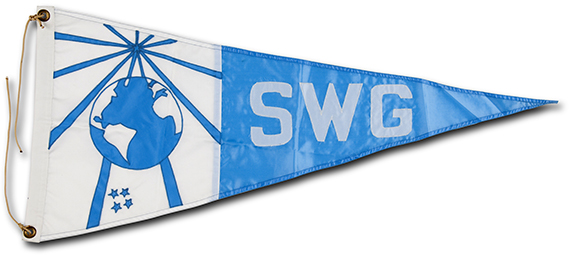
Alison Ormsby
Subhani Rath
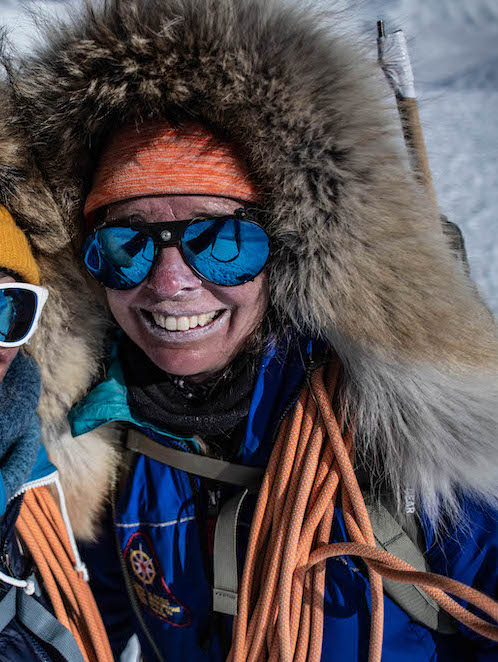
Pascale Marceau
Carried to the top of Mount Lucania, Canada’s third-tallest mountain as the first all-female expedition.
Sunniva Sorby
Carried the flag to Svalbard where she and her partner Hilde Fålun Strøm spent 17 months observing, recording and broadcasting extreme climate change events as they happened in high–Arctic real time.
Kathryn Sullivan
First carried the flag into space as a member of the Challenger shuttle crew on a nine-day mission in 1984, Kathryn Sullivan carried the flag again but this time into the Mariana Trench, the deepest point of the world’s oceans.
Alison Jones
Carried the flag to document today’s condition and usage of Egypt’s Nile River from Lake Nassar and Aswan to Alexandria and the Nile Delta.
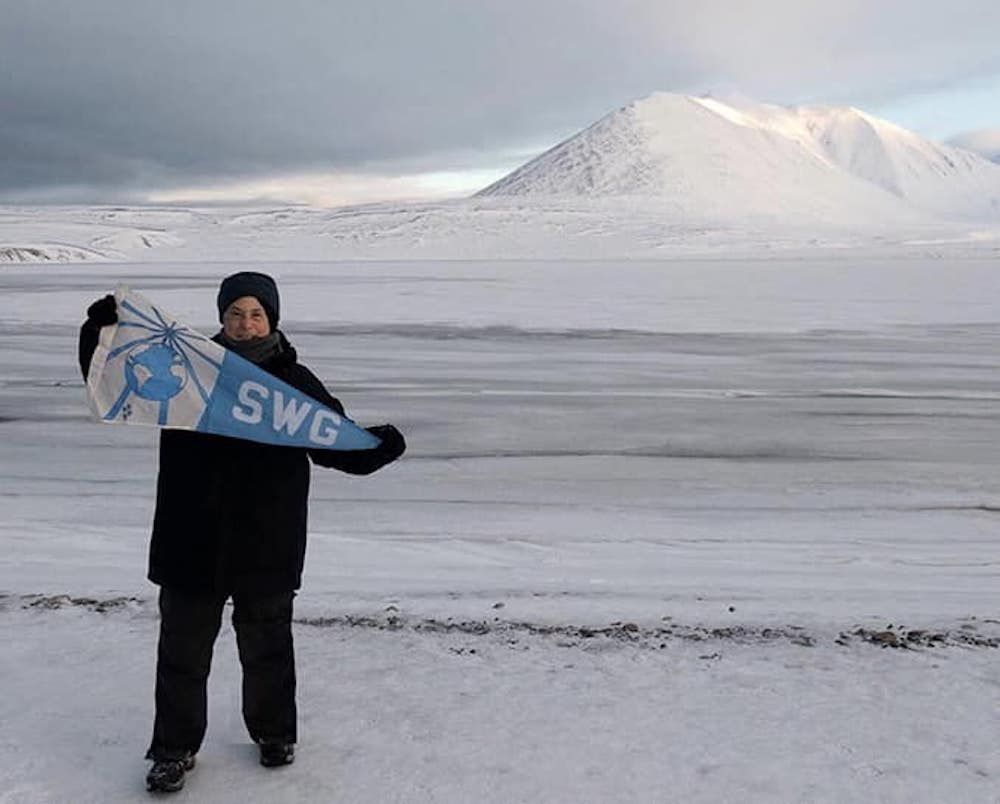
Rhea Banker
Circling, under sail, around the Svalbard Archipelago, Rhea Banker traveled from Longyearbyen at 78 degrees north and rounded Verlegenhuken, the northernmost point of Ny-Alusund, at 80 degrees north. She photographed the changing conditions of this pristine landscape, which has become one of the fastest-warming locations in the Arctic.
Sandra Nichols
Carried to northern Peru, retracing the steps of Alexander von Humboldt's journey in 1802.
Whitney Grespin
Carried to Bala Hissar, an active military base with a very strong historical/archaeological legacy.
Maria Pia Casarini
Carried out on board the Norwegian RV Lance to the Barents Sea to research and determine forces governing the break-up of ice by waves.
Joyce M. Johnson
Carried to Tacloban, Philippines, to document the changes made since Typhoon Haiyan hit land November 8, 2013.
Carole Hickman
Carried to the Tjörnes Seacliff Shellbeds of Northern Iceland to "return" important museum specimens to a field setting that has assumed new scientific importance.
Deborah Atwood
Carried to the top of Mount Kilimanjaro as part of a team conducting high altitude physiological research.
Martha Hayne Talbot
Carried on the Nam Theun Watershed Expedition to a previously unexplored area of the Anamite Mountains, Laos, Vietnam in early 2007 which explored and recorded threatened species and vegetation and again in 2011.
Karen Huntt & Michele Westmoreland
Carried to Papua New Guinea and the Solomon Islands, retracing the steps of portrait painter and SWG member Caroline Mytinger in the 1920's and taking photographs and videotapes to document cultural changes in the ensuing 80 years.
Ann Parks Hawthorne
Carried to the Southern Ross Sea area of Antarctica to photograph geographical features for a historical gazetteer.
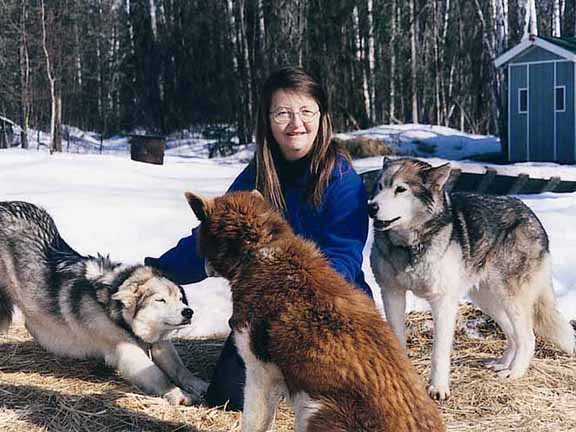
Pam Flowers
Carried in 1997 on the first documented solo winter round trip by surface to the Magnetic North Pole from Resolute Bay in the Northwest Territories, Canada. In 1993-1994 on a 2,500-mile solo dog-sled expedition across Arctic North America, retracing the 1923 Fifth Thule Expedition, marking the first time a woman or an American completed the route solo.
Elizabeth McKnight
Carried in 1993 on a three-month 3,000-mile expedition across Tanzania, Burundi, and Zambia, retracing the last expeditions of Dr. David Livingstone and documenting changes. Carried in 1992 to Rio Roosevelt in central Brazil as leader of an expedition with first two women to traverse the 950-mile river discovered by Theodore Roosevelt in 1914.
Patricia V. Rich
Carried to an underground excavation in Dinosaur Cove, Victoria, in southern Australia to excavate rocks and fossils, including those of polar dinosaurs, uncovered after 105 million years.
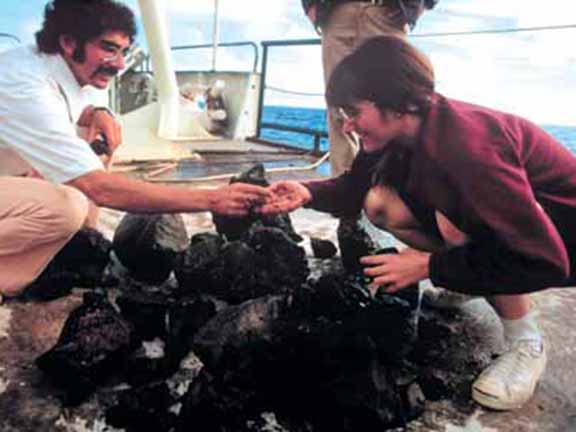
Tanya Atwater
Carried to the deep ocean about two miles down, 300 miles northeast of the Galapagos Islands, to explore rifts in the ocean bottom in an area where plates are moving apart and that contains the clearest known example of a "propagating rift" & one which is extending itself past another, shutting off the latter.

Sylvia Alice Earle
Carried to the "deep scattering layer" in the Coronado canyon offshore from San Diego, diving solo in the Deep Rover to a depth of 3,000 feet, as leader of the expedition to explore marine life in the Coronado canyon and to obtain and keep alive selected specimens.
Ellen Sparry Brush
Carried in 1984 to Chile and Bolivia to study the world's highest lake, Licancabur Crater, and its environs.
Mercedes S. Foster
Carried to Carro de la Neblina at the southernmost tip of Venezuela to study many aspects of the evolutionary process and to document with specimens the fauna of this plateau 9,000 feet above the rain forests along the Venezuela-Brazil border.
Kathryn D. Sullivan
Carried into space as a member of the Challenger shuttle crew on a nine-day mission, becoming the first American woman to "walk" in space while participating in a 3-hour extra-vehicular experiment on the feasibility of satellite refueling.
Sara Bisel
Carried to Herculaneum, Italy, for an anthropological study of skeletal material dating to the eruption of Mount Vesuvius, bringing a wealth of new details of how people lived, as well as died, in the lost cities of Vesuvius.
Alison Spence Brooks
Carried to northwestern Kalahari Desert in Botswana to lead an archaeological expedition to excavate and date a Middle Stone Age faunal site.
Eugenie Clark
Carried in 1982 to Japan's Izu Oceanic Park to study marine biota at various depths.
Mary Livingston Ripley
Carried to the remote Namdapha Valley in Arunchal Pradesh, India, on an environmental survey with the Smithsonian Institution.
Edith "Jackie" Ronne
Carried to the South Pole to participate in the 60th-anniversary celebration of Amundsen's first reaching it, and commemorating the year she spent as the first woman expedition member (as historian and newspaper correspondent) in the Antarctic with the Ronne Antarctic Research Expedition, 1946-48. The Ronne Ice Shelf, the world's second largest, was named for her.
Ellen Sparry Brush
Carried in 1970 on an American Museum of Natural History expedition to coastal Guerrero, Mexico, with archaeological investigations producing colorfully painted pottery, some resembling Olmec forms.
Jeanne M. Gurnee
Carried to Guatemala's Alta Verapaz area on a speleological expedition sponsored by the Explorers Club, when they descended in a cave to a site undisturbed for 1,000 years which contained human skeletons, pottery, and altar-hearths.
Anne Lyon Haight
Carried to Greenland to collect Eskimo artifacts for the Vilhjalmur Stefansson Collection at Dartmouth College.
Marie Poland Fish
Carried to the Canary Islands and the coast of West Africa on a Narragansett Marine Laboratory oceanographic expedition to monitor and record underwater choruses of fish, whales, and porpoises.
Gladys Owen
Carried to Oaxaca, Chiapas, and Yucatan, Mexico, while studying the effects of newly improved systems of transportation on local people.
Eugenie Clark
Carried in 1969 to lead the American delegation participating in the international Israel South Red Sea Expedition, to contrast studies of the coral reef environment with the mangrove areas in the vicinity of Massawa, Eritrea, with her work centering on sharks and eels.
Marie-Helene Sachet
Carried to Clipperton Island, off the west coast of Central America, on a biological expedition sponsored by the Scripps Institution of Oceanography to collect plants, study vegetation, and work on geology and soils.
Dorothy Schweitzer
Carried on her boat on travel based on Bora Bora to the Society Islands to study coral reefs and their creatures and the people of the area and to study marine biology.
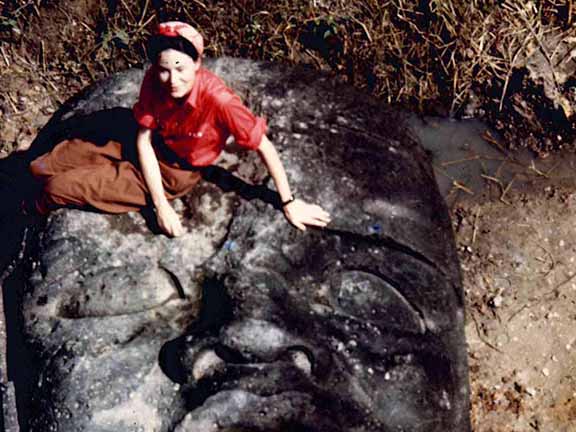
Marion Stirling Pugh
Carried in 1948, 1951, and 1953 to Panama, for archaeological work in first Chiriqui and Veraguas provinces, then Colon province, and finally on an ethnological visit to the Choco Indians. Carried in 1957 to the Pacific Coast of Ecuador to excavate pottery figurines. Pugh holds the distinction of being the only member to carry SWG's flag four times, all on archaeological expeditions with her husband, Matthew Stirling, under the joint sponsorship of the National Geographic Society and the Smithsonian Institution.
Margaretta Hopkins
Carried in 1955 on a hunting safari to Tanganyika, where, alone with a white hunter and his staff, she was the first woman to kill the rare swamp-dwelling sitatunga antelope. Carried in 1956 on a hunting expedition with her husband to French Equatorial Africa.
Ardelia Ripley Hall
Carried to South Korea on a mission for the Departments of State and Army to survey and photograph the Korean War’s damage to museums, palaces, temple-monasteries, and ancient sites.
Irene Morden
Carried on the Morden African Expedition to Southwest Africa to collect specimens of native material representing a cross-section of daily life, for the American Museum of Natural History. She was the first western woman to travel to Etosha Pan and the remote Skeleton Coast.
Lucile Quarry Mann
Carried in 1937 with her husband, National Zoo Director William Mann, to the East Indies as the only woman on the expedition, which collected live animals, birds, and reptiles for the National Zoo. Carried in 1940 to Liberia on an expedition with her husband to collect additional live specimens for the zoo, enduring rough travel by hammock, rickshaw, dugout canoe, and on foot.

Margaret Mead
Carried to Bali and New Guinea in connection with her anthropological research among the primitive tribes, documenting village life with still and moving pictures.
Mary Vaux Walcott
Carried to Japan for botanical research and collection of wildflowers for the Smithsonian Institution. She contributed watercolor paintings of the flowers.
Gloria Hollister
Carried while a scientist working with William Beebe's Oceanographic Expedition. Near Bermuda, she descended in the bathysphere to 1,208 feet, the greatest depth attained by a woman to that time.
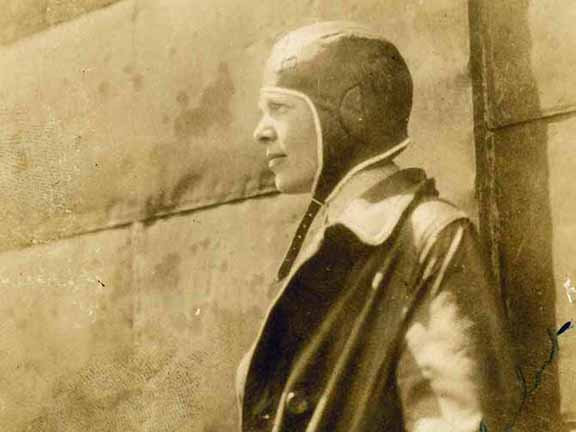
Amelia Earhart
Carried on her flight from New York to Washington to receive National Geographic Medal, but it commemorated her solo trans-Atlantic flight on May 21, 1932.
Marie Peary Stafford
Carried to Cape York, North Greenland, to dedicate a memorial to her father, Admiral Robert E. Peary. As the first known baby of a Western explorer in the Arctic, she grew up with the Inughuit people and was known by the nickname “Snow Baby.”